What’s In a Name? Bespoke Branding Adds 5-Star Panache to Private Residences.

For centuries, naming your home served a purpose, especially in rural European towns and villages, before a numbering system for addresses was invented. Home names often served as a way to find a home, with a plaque or sign posted out front listing its name and discerning it from your neighbors. Names were varied and creatively conceptualized, often inspired by the property’s physical appearance, a family name, local flora and fauna, topography, or region. It might even be reminiscent of a certain trade, named after a popular road, or a word translated from another language.
Today, this idea remains, albeit with a different approach. Branded residences are flooding the luxury market, with companies like Four Seasons, Aman, Bulgari, and Porsche attaching their names to high-end residential developments throughout the world. Wealthy buyers often want to be attached to something exclusive and unique, so custom residences attached to well-known ultra-luxurious brands typically sell briskly even in highly competitive markets.
More from Robb Report
This 1950s Home in Los Angeles Has Been Transformed Into an $8 Million Modern Idyll
This Wooded Private Island in Canada Can Be Yours for $1.5 Million
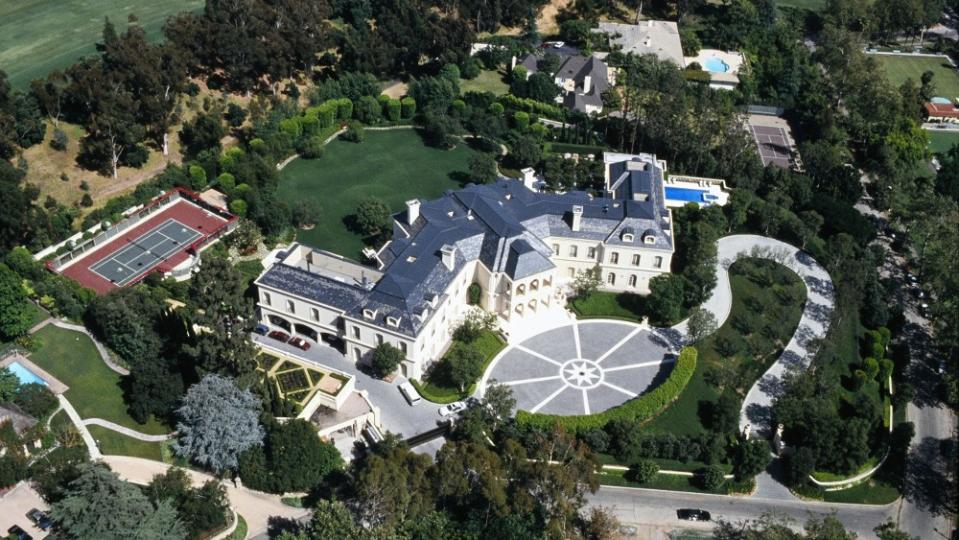
Sometimes, It’s Personal
Branding residences, however, goes beyond just the posh condo towers that are chock-a-block with five-star resort-style amenities. Sam Palmer, an off-market property specialist and a broker with The Agency, finds that branding a standalone, single-family residence can be just as appealing for both buyers and sellers.
When the late primetime TV titan Aaron Spelling and his wife, Candy, purchased the former Bing Crosby Estate in Los Angeles in 1983, they razed the existing house and built the now-iconic Spelling Manor, which was rebranded by a subsequent owner as The Manor.
Located in the tony Holmby Hills neighborhood, The Manor is one of the most famous homes in the U.S., frequently referenced in pop culture thanks to its scale—it’s the same size as a football field!—and for its notable former owners. Billionaire Formula 1 heiress and international socialite Petra Ecclestone, now married to Palmer, purchased The Manor in 2011 and sold it in 2019 to Canadian multibillionaire businessman Daryl Katz. Still, The Manor’s name remains.
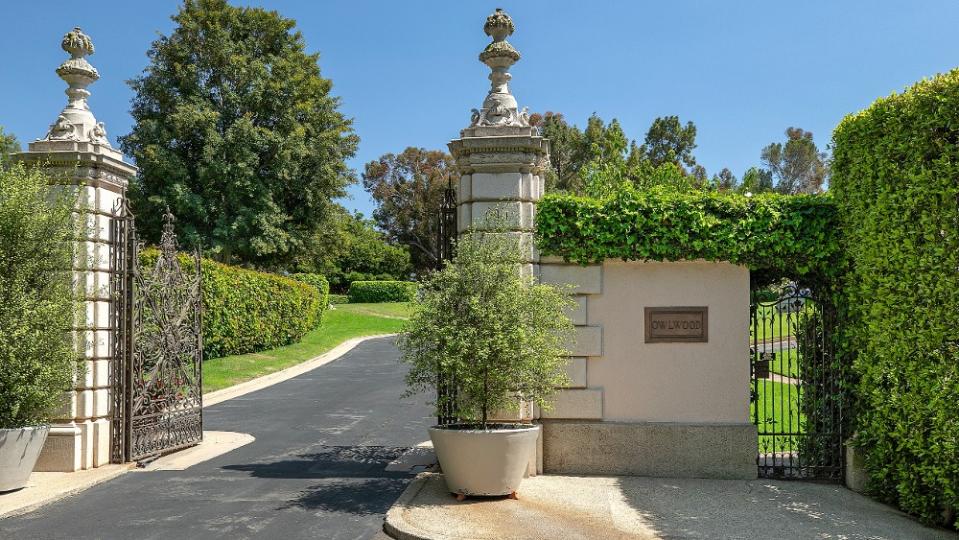
Stand Out From the Crowd
Owlwood, a historic mansion in Holmby Hills, is another trophy residence known predominately by name. Built in 1936, the estate got its name from the owls that lived within the soaring trees surrounding the property. Though it is rarely referenced by its address, those in the know are well aware of its unique provenance—in the late 1960s, Cher and Sonny Bono bought it from Tony Curtis—and its location on Sunset Boulevard.
“Similar to luxury condominiums, extending an established brand to a single-family home immediately confers the advantage of a recognizable name, enabling the property to stand out from other homes on the market,” says Nick Pérez, president of condominium development at Related Group, which has developed branded residences for Waldorf Astoria, Rosewood, St. Regis, and Ritz-Carlton, among others. “While branded condos offer a sense of community and lifestyle, the potential benefits of branding a single-family home lie in creating an identity that elevates its market appeal.”
Still, one reason wealthy buyers appreciate a home with a distinct name is because it isn’t referenced by an address that anyone can find. “A lot of our celebrity clients and high-profile billionaires name their homes or purchase homes that have been branded or named for that exact reason,” says listing agent Aaron Kirman with Christie’s International Real Estate.
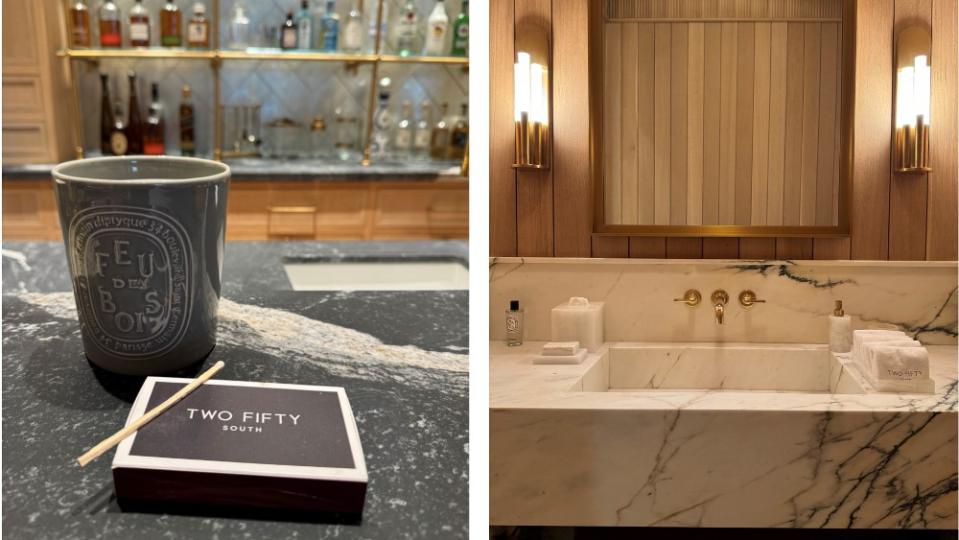
Turn Your House Into a Hotel
Palmer, who previously ran a staffing agency that helped UHNW individuals curate staff for their homes, and his wife have long branded their personal residences in London and Los Angeles. Ecclestone has developed nearly all of her homes to have elegant, hotel-like atmospheres, with each given a unique name and brand identity that manifests throughout the home.
Branding a home today, however, is more than just giving it a great, memorable name. Palmer says he and his wife will choose a name, select a font, and create a logo before they’ve even furnished the property. The logo then gets woven into the fabric of a home through the design on doormats, staff uniforms, towels, robes, candles, and even matchboxes and stationery.
The couple’s former homes include Sloane House in London, which has previously been listed off-market for $230 million. The home’s gates are emblazoned with the home’s name, and inside, the primary bathroom features ‘SH’ engraved in marble, as well as a plaque that reads ‘Sloane House.’ Their current home in L.A., which they’ve dubbed Two Fifty South, features doormats, hand towels, and additional accessories with the home’s name on them.
“It just makes a home that much more special,” Palmer tells Robb Report. “It’s so subtle, but when you see it, you feel that the home really has its own identity. You can brand your home, and it can be loud and in your face, but in our homes, you wouldn’t notice until I told you. It’s an amazing thing because it really makes your home your own hotel. Anyone can brand their house to their own style; it doesn’t matter if you live in a one-bedroom apartment or a 56,000-square-foot house.”
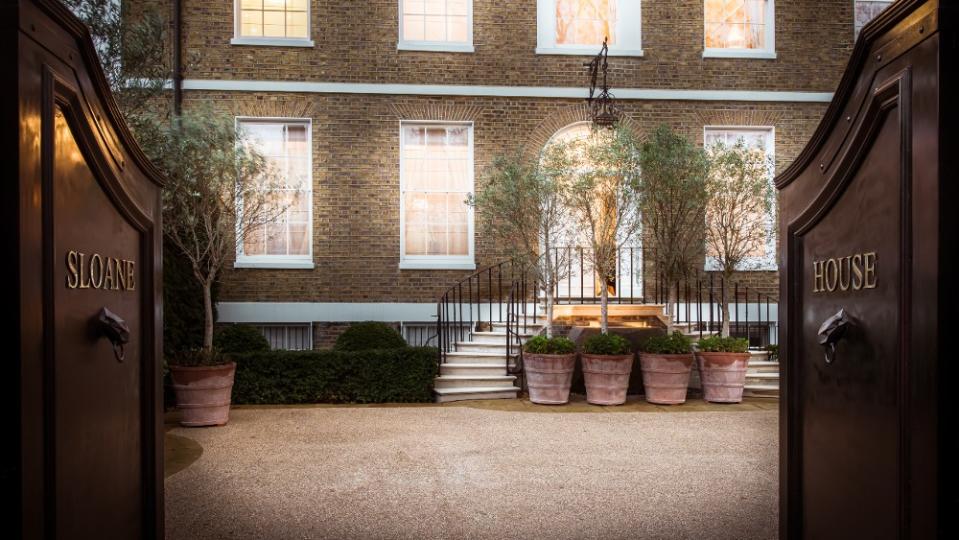
Let Your Nose Lead the Way
It’s been common practice for centuries in the U.K. for homes to feature depictions of a family crest, but for more modern homebuyers, branding a home doesn’t necessarily need to take an obvious or in-your-face approach. In fact, branding doesn’t even have to be visible to the naked eye to make an impact. After all, nothing says “Welcome Home” quite like a fragrance you won’t find anywhere else in the world. This kind of custom olfactory experience was likely inspired by hotels that create custom lobby scents to help familiarize guests. Brands like 1 Hotels, Four Seasons, and Aman, among others, often create custom scents for their lobbies and common spaces because a scent is intimately connected with memory and can immediately transport you to a time and a place.
A $68 million mansion in Los Angeles, known as 1859 after its street address, is being sold with $25,000 worth of custom fragrance from the Parisian perfumer Ex Nihilo, who created a one-of-a-kind scent for 1859. Throughout the 20,000-square-foot ultra-modern residence, there are six 1859-branded Ex Nihilo diffusers, along with branded soaps and body products, air mists, and candles that are strategically integrated throughout the house. The owner can customize the intensity, schedule, and scent levels of the diffusers via an app.
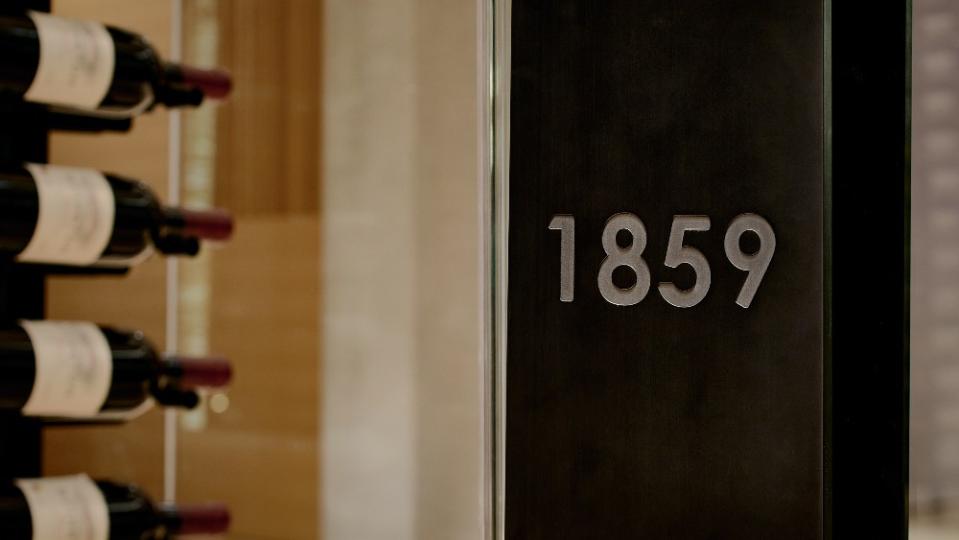
Lifestyle Matters
Los Angeles-based real estate agent Tomer Fridman of Compass, known for his high profile, celebrity clients, including several members of the Jenner-Kardashian family, says that naming and branding a home adds cache, similar to buying designer clothing or accessories. It also differentiates you from your neighbor. “It’s a trophy or marquee property, and many people want to be known as the buyers of these iconic, well-known estates, especially for their architectural history,” he says.
Case in point: The Azria Estate, in the Holmby Hills neighborhood, is the former home of fashion designer Max Azria, founder of BCBG Max Azria. Though it’s named for its former owner, similar to the Spelling Manor, its personal logo depicts a white house with a bright-red door, a visual immediately synonymous with the home. “A lot of the estates we’ve sold in the past are unique to their genre of architecture, and there’s always some type of hallmark that makes them unique,” Fridman says. “The Azria Estate was built by iconic 1930s L.A. architect Paul Williams, whose homes are all beautiful, stark-white properties. This home, however, has a gorgeous red door with embellished millwork. We ended up creating a logo with the red door as the focal point because it differed from his other properties.”
Fridman explains that the red door motif was translated into collateral like matchboxes, candles, and stationery that they use as marketing tools, but then serve as gifts to the buyer for personal use—and what guests don’t want to leave with a custom memento to their friend’s iconic home? “We’re not just selling homes, but we are selling a lifestyle to homeowners,” Fridman says. “Similar to how the Four Seasons or the Ritz-Carlton have distinct accessories, fragrances, or emblems, homeowners want that within their homes, too.”
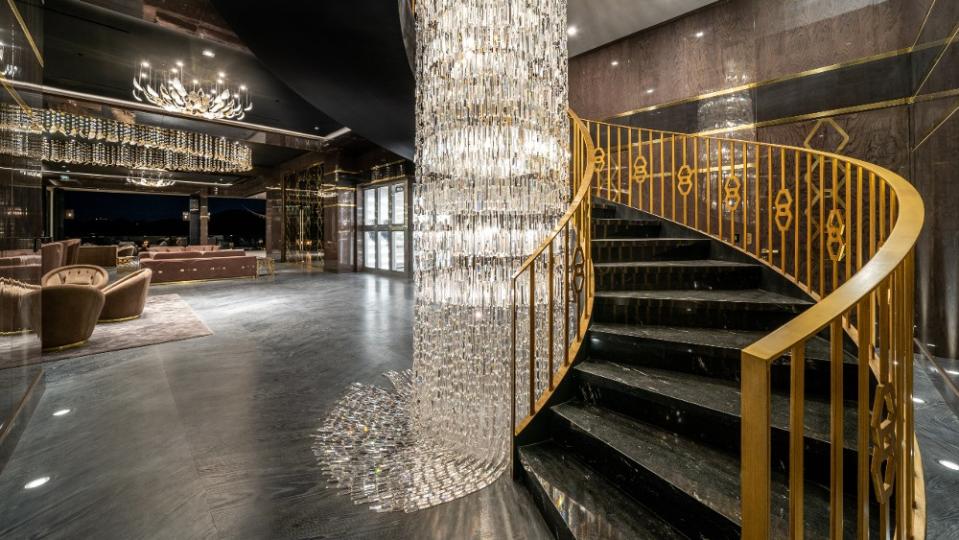
X Marks the Spot
Emblems can be full-fledged logos or subtle commonalities. In L.A., La Fin, a $139 million spec-built mansion with its own nightclub, rotating auto gallery, and vodka tasting room, also features subtle custom branding. Eagle-eyed individuals might notice La Fin’s artful logo—an interlocked gold hexagon—in nearly every room, from the lacquered walls of the primary bedroom to the furniture in the living areas. It’s even marked on the glass walls of the luxe wine room and on a door in the kitchen.
“The One was super branded—had we not named it, who knows if it would have gotten the hype it did?” Kirman says. He says naming a home helps agents sell homes because it gives it an identity that can be exploited in the marketing process. “It also gives the house a legacy that it might not have had before,” Kirman says. “And that legacy then carries through for the rest of the home as well as the people that are living in the home. I have owners of branded homes who host and socialize a lot, and their family and friends won’t even reference the address; they’ll refer to it as ‘X’ house. It becomes a very social home and tends to attract the life that people want to live.”
Whether the name or logo exudes a sense of sophistication, has a familial tie, or offers an aesthetic branding moment, why not transform your humble home into a trophy residence?
Best of Robb Report
Sign up for Robb Report's Newsletter. For the latest news, follow us on Facebook, Twitter, and Instagram.

